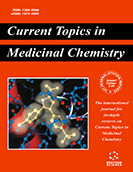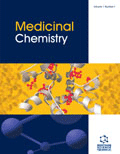Abstract
Glycosylation is one of the most important post-translational modifications of proteins, and has been widely acknowledged as one of the most important ways to modulate both protein function and lifespan. The acute phase proteins are a major group of serum proteins whose concentration is altered during various pathophysiological conditions. The aim of this paper is to review the structure and functions of the α1-acid glycoprotein (AGP). AGP belongs to the subfamily of immunocalins, a group of binding proteins that also have immunomodulatory functions. One of the most interesting features of AGP is that its glycosylation microheterogeneity can be modified during diseases. This aspect is particularly remarkable, since both the immunomodulatory and the binding properties of AGP strongly depend on its carbohydrate composition. For these reasons, AGP can be considered an outstanding model for the study of glycan pattern modification during diseases. This review is focused on the most recent studies on the occurrence of different glycoforms in plasma and tissues and how the appearance of different oligosaccharide patterns during systemic inflammation or diseases can influence AGPs biological functions. The first part of the review will describe the structure of AGP and the several biological functions identified so far for this protein. The second part will be devoted to the post-translational modifications of the oligosaccharides micro-heterogeneity of AGP caused by pathological states. A critical evaluation of the impact of different AGP glycoforms on both its transport and anti-inflammatory features, and how the modifications of the glycan pattern can be utilized in clinical biochemistry, is also discussed.
Keywords: α1-Acid glycoprotein, orosomucoid, acute phase reaction, sialic acid
Current Protein & Peptide Science
Title: The Acute Phase Protein α1-Acid Glycoprotein: A Model for Altered Glycosylation During Diseases
Volume: 8 Issue: 1
Author(s): Fabrizio Ceciliani and Vanessa Pocacqua
Affiliation:
Keywords: α1-Acid glycoprotein, orosomucoid, acute phase reaction, sialic acid
Abstract: Glycosylation is one of the most important post-translational modifications of proteins, and has been widely acknowledged as one of the most important ways to modulate both protein function and lifespan. The acute phase proteins are a major group of serum proteins whose concentration is altered during various pathophysiological conditions. The aim of this paper is to review the structure and functions of the α1-acid glycoprotein (AGP). AGP belongs to the subfamily of immunocalins, a group of binding proteins that also have immunomodulatory functions. One of the most interesting features of AGP is that its glycosylation microheterogeneity can be modified during diseases. This aspect is particularly remarkable, since both the immunomodulatory and the binding properties of AGP strongly depend on its carbohydrate composition. For these reasons, AGP can be considered an outstanding model for the study of glycan pattern modification during diseases. This review is focused on the most recent studies on the occurrence of different glycoforms in plasma and tissues and how the appearance of different oligosaccharide patterns during systemic inflammation or diseases can influence AGPs biological functions. The first part of the review will describe the structure of AGP and the several biological functions identified so far for this protein. The second part will be devoted to the post-translational modifications of the oligosaccharides micro-heterogeneity of AGP caused by pathological states. A critical evaluation of the impact of different AGP glycoforms on both its transport and anti-inflammatory features, and how the modifications of the glycan pattern can be utilized in clinical biochemistry, is also discussed.
Export Options
About this article
Cite this article as:
Ceciliani Fabrizio and Pocacqua Vanessa, The Acute Phase Protein α1-Acid Glycoprotein: A Model for Altered Glycosylation During Diseases, Current Protein & Peptide Science 2007; 8 (1) . https://dx.doi.org/10.2174/138920307779941497
| DOI https://dx.doi.org/10.2174/138920307779941497 |
Print ISSN 1389-2037 |
| Publisher Name Bentham Science Publisher |
Online ISSN 1875-5550 |
 86
86
- Author Guidelines
- Bentham Author Support Services (BASS)
- Graphical Abstracts
- Fabricating and Stating False Information
- Research Misconduct
- Post Publication Discussions and Corrections
- Publishing Ethics and Rectitude
- Increase Visibility of Your Article
- Archiving Policies
- Peer Review Workflow
- Order Your Article Before Print
- Promote Your Article
- Manuscript Transfer Facility
- Editorial Policies
- Allegations from Whistleblowers
Related Articles
-
Aurora A and B Kinases - Targets of Novel Anticancer Drugs
Recent Patents on Anti-Cancer Drug Discovery Cyclophilin function in Cancer; lessons from virus replication
Current Molecular Pharmacology Real-Time PCR: Revolutionizing Detection and Expression Analysis of Genes
Current Genomics Perspectives in Biomolecular Therapeutic Intervention in Cancer: From the Early to the New Strategies With Type I Interferons
Current Medicinal Chemistry Clinical Applications and Biosafety of Human Adult Mesenchymal Stem Cells
Current Pharmaceutical Design Biofunctional Peptides from Milk Proteins: Mineral Binding and Cytomodulatory Effects
Current Pharmaceutical Design New Insights about the Potential Application of the Association of Vitamins C (Sodium Ascorbate) and K3 (Menadione) as Auxiliary Therapy in Cancer Treatment
Medicinal Chemistry Reviews - Online (Discontinued) HDAC as a Therapeutic Target for Treatment of Endometrial Cancers
Current Pharmaceutical Design Bioinorganic Chemistry: The Study of the Fate of Platinum-Based Antitumour Drugs
Current Chemical Biology Pharmacological and Clinical Studies on Purine Nucleoside Analogs- New Anticancer Agents
Mini-Reviews in Medicinal Chemistry Targeting the PI3K/Akt/mTOR Axis by Apigenin for Cancer Prevention
Anti-Cancer Agents in Medicinal Chemistry Histone Deacetylase Inhibitors: Potent Anti-Leukemic Agents
Current Medicinal Chemistry Current Status in Iron Chelation in Hemoglobinopathies
Current Molecular Medicine Synthesis and Evaluation of A New Series of Thiazole Derivatives as Potential Antitumor Agents and MMP Inhibitors
Anti-Cancer Agents in Medicinal Chemistry Retinoid Receptors in Inflammatory Responses: A Potential Target for Pharmacology
Current Drug Targets - Inflammation & Allergy Dasatinib in the Treatment of Chronic Myeloid Leukemia
Current Signal Transduction Therapy Dynamics of CD86 Expression on Allergic Inflammation - New Insights
Recent Patents on Inflammation & Allergy Drug Discovery Bombacaceae Between the Ethnomedical Uses and Pharmacological Evidences: A Review
The Natural Products Journal The Potential of Flavonoids and Tannins from Medicinal Plants as Anticancer Agents
Anti-Cancer Agents in Medicinal Chemistry Application of Pharmacogenomic Approaches in the Study of Drug Response in Complex Diseases
Current Pharmacogenomics

















.jpeg)








